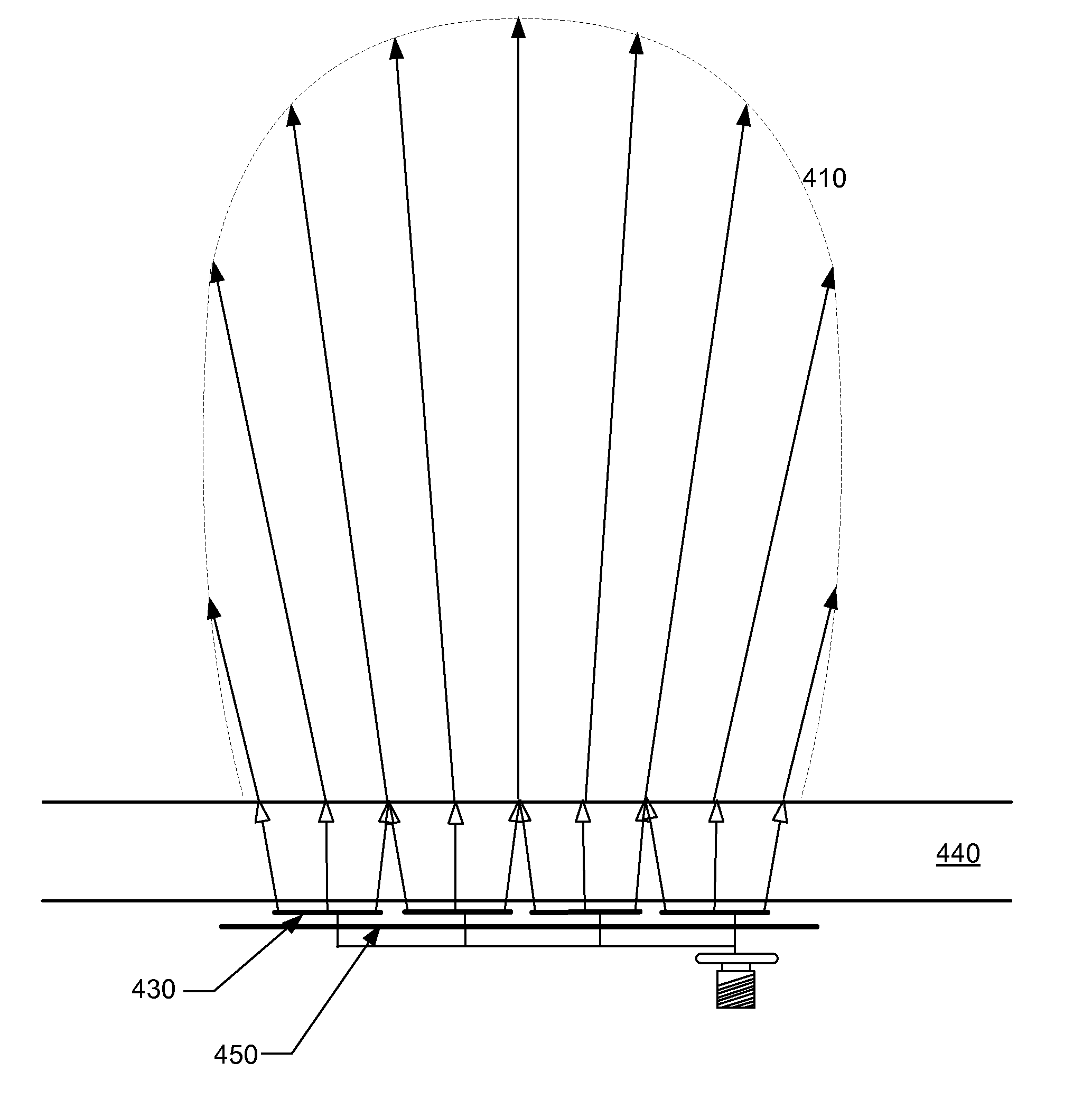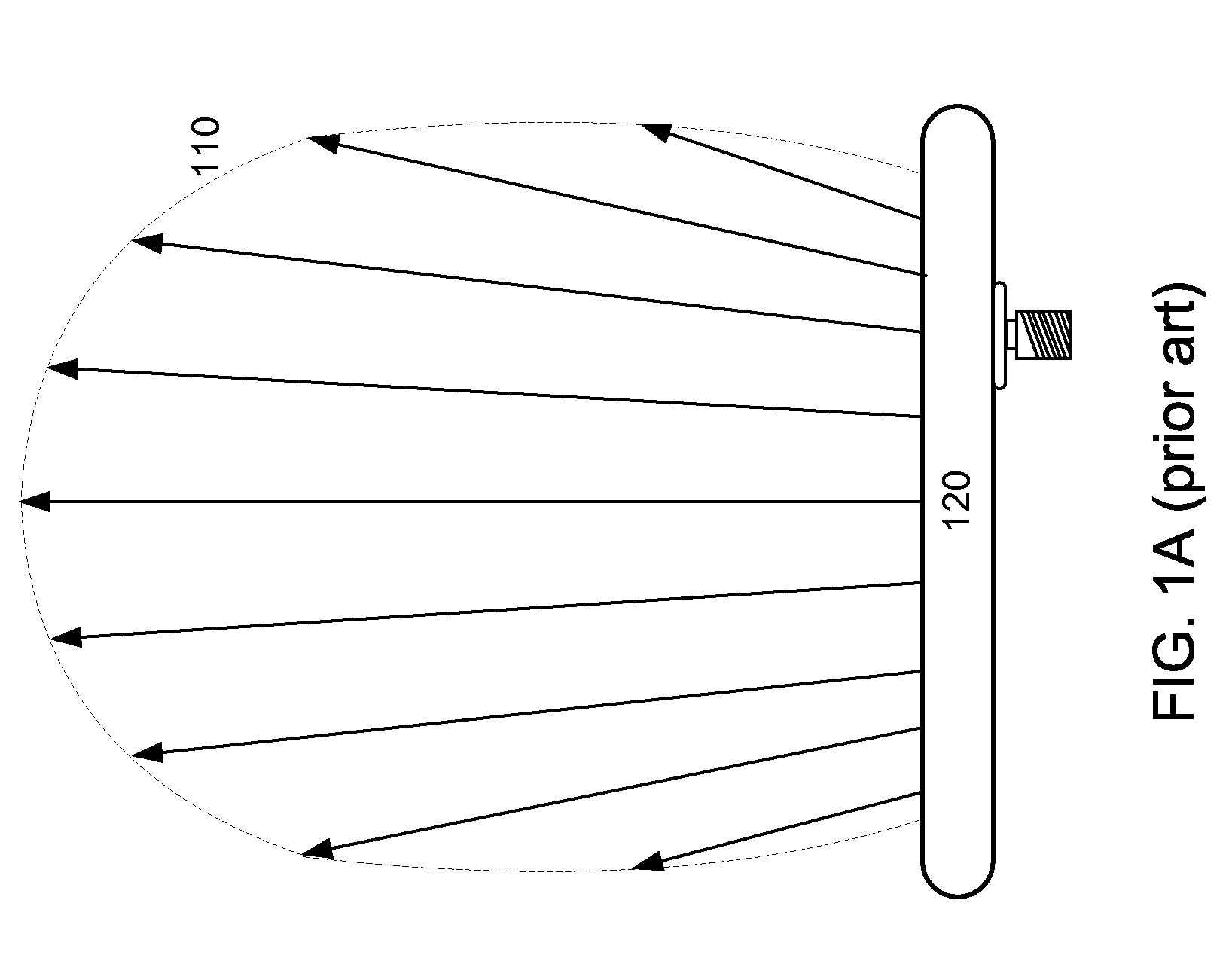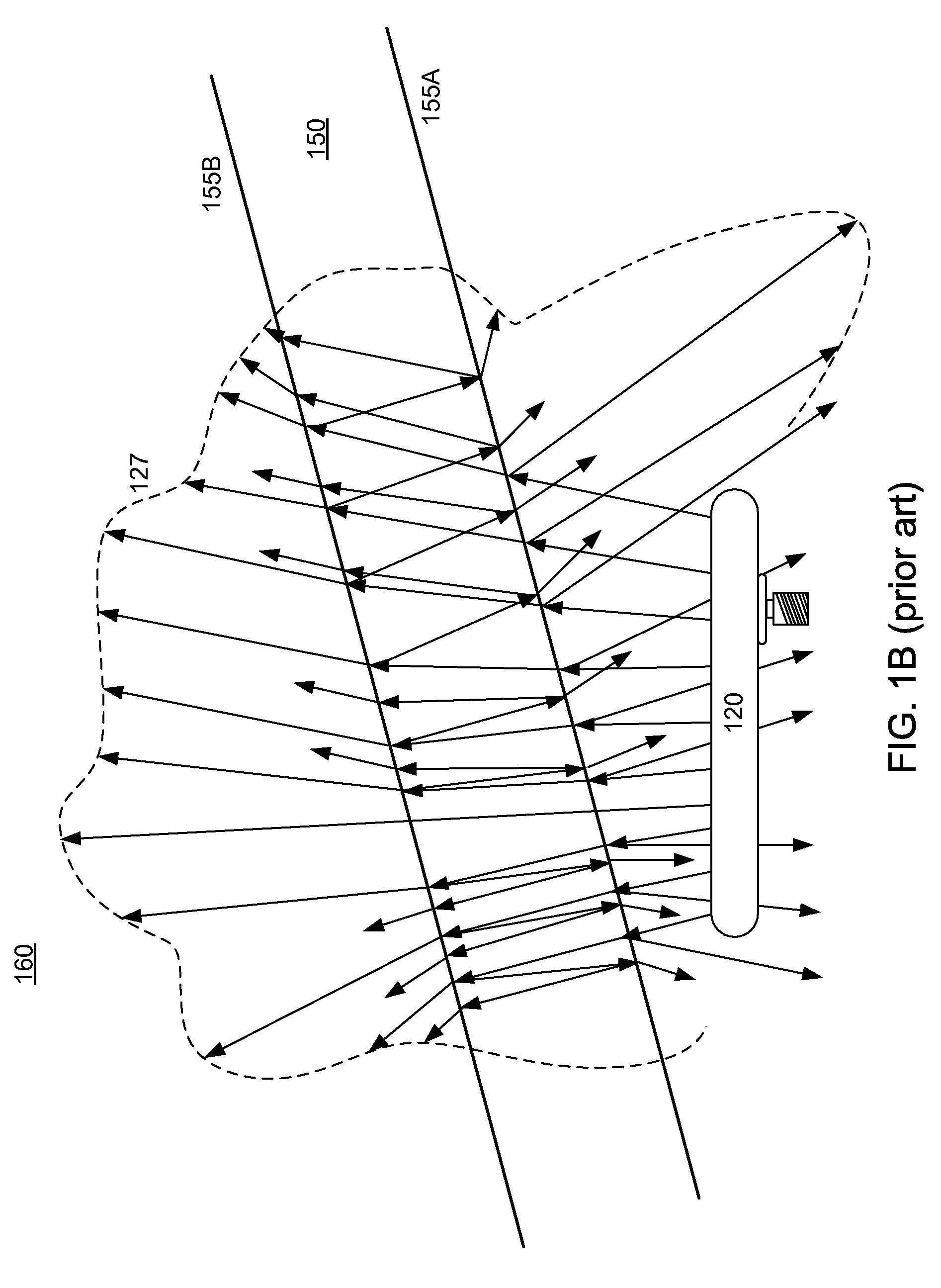Antennas Integrated with Dielectric Construction Materials
a technology of dielectric construction materials and antennas, applied in the field of antennas, can solve the problems of obstructing bodies, requiring the use of antennas near, and none acting to address the root cause of problems, and achieve the effect of reducing the number of air interfaces
- Summary
- Abstract
- Description
- Claims
- Application Information
AI Technical Summary
Benefits of technology
Problems solved by technology
Method used
Image
Examples
Embodiment Construction
[0023]FIG. 2 shows a cross-section of an example unidirectional antenna apparatus 200 according to the invention. In this example, the radiating structure resides wholly within the dielectric construction material 240 of a construction component 249. The radiating structure in this example includes four radiating patch elements 230 (which could be linear, circular, serpentine or other), dielectric backing 242 and sub-reflector 250. The dielectric backing 242, which is a portion of the dielectric construction material 240, is designed to provide both a substance to mechanically support the radiating elements 230 and to provide an increase in the dielectric constant of the material 242 behind the radiating elements 230 relative to air. This latter effect acts to reduce the spacing required between the radiating elements 230 and the sub-reflector 250, such reduction in overall volume being a desirable quality. An RF port 260 is also attached to the construction component 249 and provid...
PUM
 Login to View More
Login to View More Abstract
Description
Claims
Application Information
 Login to View More
Login to View More - R&D
- Intellectual Property
- Life Sciences
- Materials
- Tech Scout
- Unparalleled Data Quality
- Higher Quality Content
- 60% Fewer Hallucinations
Browse by: Latest US Patents, China's latest patents, Technical Efficacy Thesaurus, Application Domain, Technology Topic, Popular Technical Reports.
© 2025 PatSnap. All rights reserved.Legal|Privacy policy|Modern Slavery Act Transparency Statement|Sitemap|About US| Contact US: help@patsnap.com



